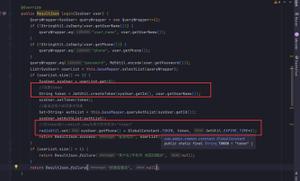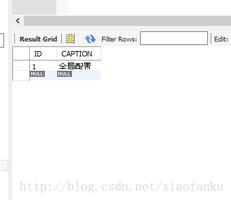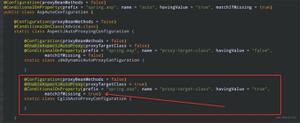Spring Aop(十)——编程式的Pointcut
本文内容纲要:
- 编程式的Pointcut- 自定义Pointcut
- 继承自现有的Pointcut
转发地址:https://www.iteye.com/blog/elim-2396526
编程式的Pointcut
除了可以通过注解和Xml配置定义Pointcut之外,其实我们还可以通过程序来定义Pointcut。Spring Aop的切入点(Pointcut)对应于它的一个Pointcut接口,全称是org.springframework.aop.Pointcut。该接口的定义如下:
public interface Pointcut { ClassFilter getClassFilter();
MethodMatcher getMethodMatcher(); Pointcut TRUE = TruePointcut.INSTANCE; }
该接口一共定义了两个核心方法,一个用于获取该Pointcut对应的过滤Class的ClassFilter对象,一个用于获取过滤Method的MethodMatcher对象。
ClassFilter接口的定义如下:
public interface ClassFilter { boolean matches(Class<?> clazz); ClassFilter TRUE = TrueClassFilter.INSTANCE; }
该接口只定义了一个matches方法,用于判断指定的Class对象是否匹配当前的过滤规则。
MethodMatcher接口定义如下:
public interface MethodMatcher { boolean matches(Method method, Class<?> targetClass); boolean isRuntime(); boolean matches(Method method, Class<?> targetClass, Object[] args); MethodMatcher TRUE = TrueMethodMatcher.INSTANCE; }
该接口中一共定义了三个方法,两个matches方法,一个包含方法参数一个不包含。不包含方法参数的matches方法用于判断非运行时的方法匹配,比如只需要匹配方法名、方法参数定义的;包含方法参数值的matches方法用于运行时判断方法是否匹配,应用于需要根据方法传参来判断是否匹配的情况,但是该方法一般会在不包含方法参数的matches方法返回true和isRuntime()方法true的情形下才会调用。isRuntime()方法用于指定该Pointcut是否需要在运行时才能判断对应的方法是否匹配。
自定义Pointcut
以下是一个自定义Pointcut的代码,其将匹配所有的名称Service结尾的Class对应的名称以find开始的方法调用:
import java.lang.reflect.Method;import org.springframework.aop.ClassFilter;
import org.springframework.aop.MethodMatcher; import org.springframework.aop.Pointcut; /** * 自定义Pointcut * @author Elim * 2017年5月8日 */ public class MyCustomPointcut implements Pointcut { @Override public ClassFilter getClassFilter() { return new MyCustomClassFilter(); } @Override public MethodMatcher getMethodMatcher() { return new MyCustomMethodMatcher(); } private static class MyCustomClassFilter implements ClassFilter { @Override public boolean matches(Class<?> clazz) { //实现自己的判断逻辑,这里简单的判断对应Class的名称是以Service结尾的就表示匹配 return clazz.getName().endsWith("Service"); } } private static class MyCustomMethodMatcher implements MethodMatcher { @Override public boolean matches(Method method, Class<?> targetClass) { //实现方法匹配逻辑 return method.getName().startsWith("find"); } @Override public boolean isRuntime() { return false; } @Override public boolean matches(Method method, Class<?> targetClass, Object[] args) { return false; } } }
然后我们可以定义该自定义Pointcut对应的bean,再定义一个Advisor将使用该Pointcut。如下示例中我们就指定了将在MyCustomPointcut对应的切入点处采用LogAroundAdvice。
<aop:config> <aop:advisor advice-ref="logAroundAdvice" pointcut-ref="myCustomPointcut"/> </aop:config> <bean id="logAroundAdvice" class="com.elim.learn.spring.aop.advice.LogAroundAdvice"/> <bean id="myCustomPointcut" class="com.elim.learn.spring.aop.pointcut.MyCustomPointcut"/>
继承自现有的Pointcut
除了可以完全实现Pointcut接口外,我们还可以直接使用Spring自带的Pointcut。比如基于固定方法的StaticMethodMatcherPointcut。该Pointcut是一个抽象类,在使用该Pointcut时只需要实现一个抽象方法matches(Method method, Class<?> targetClass),以下是一个继承自StaticMethodMatcherPointcut的示例类定义,该Pointcut将匹配所有Class中定义的方法名以find开头的方法。
public class FindMethodMatcherPointcut extends StaticMethodMatcherPointcut { @Override public boolean matches(Method method, Class<?> targetClass) { return method.getName().startsWith("find"); } }
关于更多Spring官方已经提供的其它Pointcut定义请参考Spring的API文档。
(注:本文是基于Spring4.1.0所写,Elim写于2017年5月8日)
本文内容总结:编程式的Pointcut,自定义Pointcut,继承自现有的Pointcut,
原文链接:https://www.cnblogs.com/Jeely/p/11947620.html
以上是 Spring Aop(十)——编程式的Pointcut 的全部内容, 来源链接: utcz.com/z/362865.html








